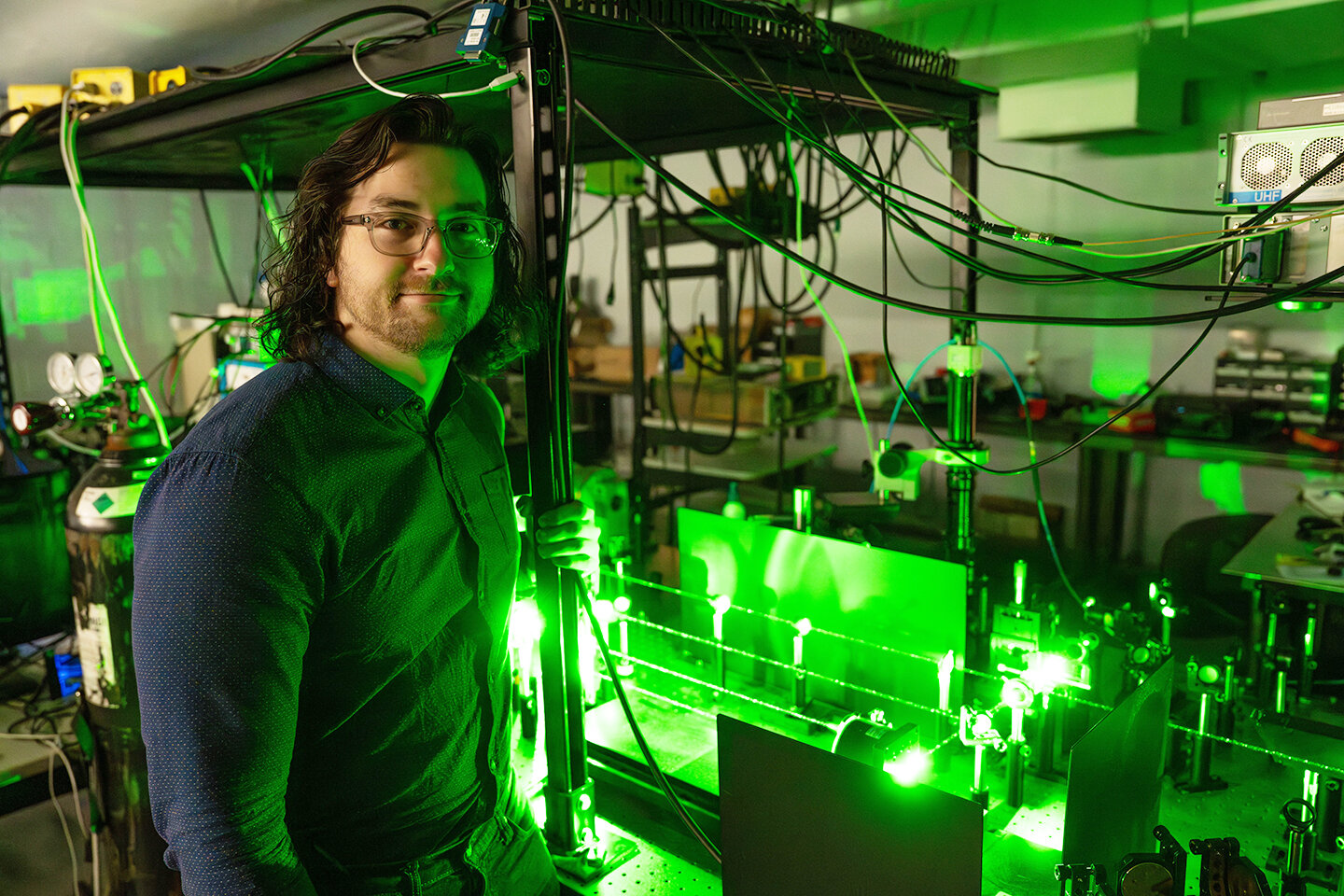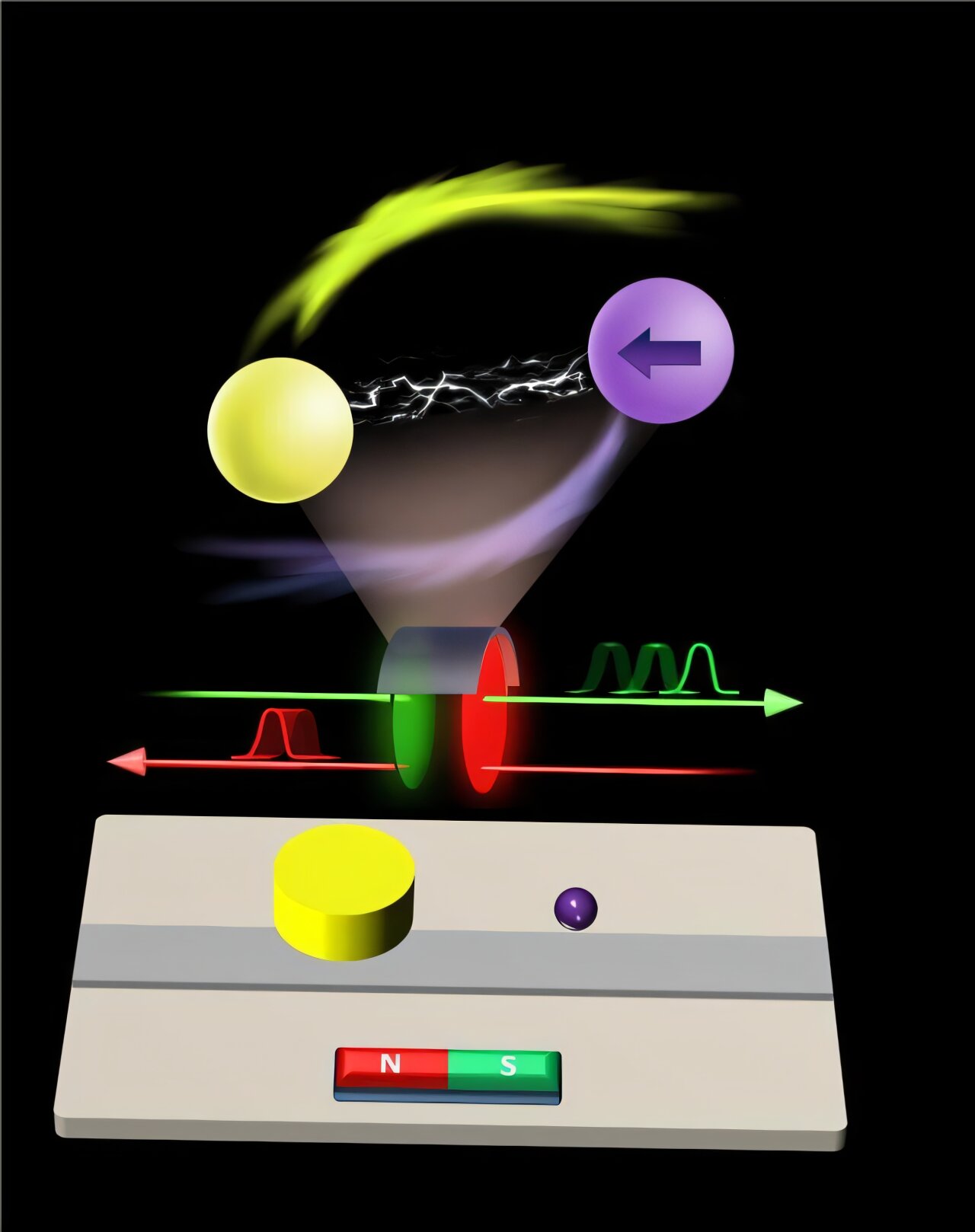Photons in a dielectric resonator (yellow) interact with magnons in a YIG sphere (violet) via a microstrip (gray). This interaction acts as a ‘traffic light’ for microwave pulses—speeding them up (green) in one direction and slowing them down (red) in the other, controllable by a magnetic field. Credit: Yao et al.
A One-Way Street for Light: The Future of Quantum Communication
Imagine a world where light doesn’t just travel—it obeys traffic rules. In a groundbreaking study, scientists have developed a device that can control the speed of light differently depending on its direction. This innovation could revolutionize how we process and transmit information in quantum computing and communication systems.
The Science Behind the Innovation
At the heart of this discovery is a field known as cavity magnonics, which explores the interaction between light particles (photons) and magnetic waves (magnons) within a confined space or cavity. By coupling these two entities, researchers can manipulate the properties of light in unprecedented ways.
Traditional methods, like electromagnetically induced transparency (EIT), allow for the slowing down of light but do so equally in all directions—a property known as reciprocity. However, the new device introduces nonreciprocal control, meaning it can slow down light in one direction while speeding it up in the opposite direction.
How It Works
The device comprises a dielectric resonator and a sphere made of yttrium iron garnet (YIG), a material known for its magnetic properties. When a microwave pulse enters the system, the interaction between photons and magnons can be tuned using an external magnetic field. This tuning alters the phase of the light wave, effectively controlling its speed based on the direction of travel.
Visualize This:
It’s like having a traffic light that turns green for cars going north and red for those going south—but instead of cars, it’s light pulses being directed at varying speeds.
Implications for Technology
This ability to control light’s speed nonreciprocally has significant implications:
Quantum Computing
Enhances the precision and control of quantum bits (qubits), leading to more reliable quantum computers.
Secure Communications
Enables the development of one-way channels for information, crucial for secure data transmission.
Neuromorphic Computing
Assists in creating systems that mimic neural networks, improving artificial intelligence technologies.
The Road Ahead
While this research marks a significant milestone, it’s just the beginning. Future studies will aim to integrate this technology into practical applications, potentially transforming how we handle information at the most fundamental levels.
Curious to Know More?
How might this directional control of light influence the development of future technologies? Could we see its application in everyday devices sooner than expected? Stay tuned to DailySciTech.com as we delve deeper into the evolving world of quantum innovations.
More information: Jiguang Yao et al, Nonreciprocal Control of the Speed of Light Using Cavity Magnonics, Physical Review Letters (2025). DOI: 10.1103/PhysRevLett.134.196904.










